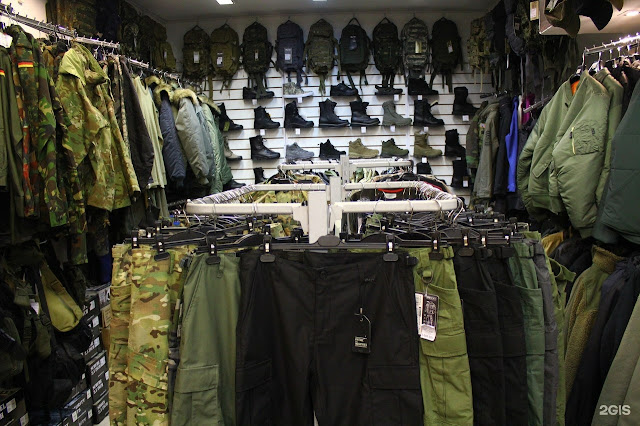Law Enforcement and Military Clothing Market: Insights and Analysis
 |
| Law Enforcement and Military Clothing Market |
The Law Enforcement and Military Clothing Market encompasses
the production, distribution, and sale of specialized clothing and gear
tailored for law enforcement personnel and military forces worldwide. This
market segment is integral to ensuring the safety, functionality, and comfort
of personnel operating in challenging environments, including combat zones,
tactical operations, and law enforcement duties.
The law enforcement and military clothing Market size was
valued at US$ 1.68 Billion in
2023 and is expected to reach US$ 3.12 Billion by 2031, growing at a compound annual
growth rate (CAGR) of 8% from
2024 to 2031.
The Law
Enforcement and Military Clothing Market supply a range of apparel and
equipment designed for specific operational needs. This includes uniforms,
protective gear, camouflage clothing, footwear, and accessories tailored to
meet the rigorous demands of law enforcement agencies and military units. The
market focuses on providing durable, high-performance clothing solutions that
enhance operational effectiveness and safety for personnel in the field.
Key Players
Key players operating in Law Enforcement and Military
Clothing Market are 3M, DAIKIN, VF CORPORATION
(U.S.), W. L. Gore & Associates Inc., Honeywell International Inc.,
Kimberly Clark Corp, MAS, Respirex, Kappler Inc., DuPont, International
Enviroguard and SOLVAY.
Market
Drivers for Law Enforcement and Military Clothing Market
Several factors drive the growth of the Law Enforcement and
Military Clothing Market. One key driver is the continuous modernization and
expansion of law enforcement agencies and military forces globally. As these
organizations invest in advanced equipment and gear to enhance operational
capabilities, the demand for specialized clothing tailored to their specific
needs increases.
Additionally, rising security concerns, geopolitical
tensions, and counter-terrorism efforts contribute to market growth. Law
enforcement agencies and military units prioritize outfitting their personnel
with advanced clothing and gear to ensure readiness and effectiveness in
various operational scenarios, driving demand for innovative solutions in the
market.
PEST
Analysis of Law Enforcement and Military Clothing Market
Political
Factors: Political factors, including government defense budgets,
procurement policies, and international security agreements, significantly
impact the Law Enforcement and Military Clothing Market. Changes in defense
spending, strategic alliances, and military modernization programs influence
market dynamics and opportunities for clothing manufacturers and suppliers.
Economic
Factors: Economic trends such as GDP growth, defense expenditure
allocations, and market competition affect the Law Enforcement and Military Clothing
Market. Economic stability, investment in defense infrastructure, and market
demand for advanced clothing technologies drive market growth and innovation.
Social
Factors: Social factors such as evolving security threats,
urbanization, and cultural preferences for uniform designs influence the Law
Enforcement and Military Clothing Market. Adapting to changing social trends,
incorporating ergonomic designs, and addressing personnel comfort and safety
concerns are essential for market success.
Technological
Factors: Technological advancements in textile materials,
manufacturing processes, and wearable technologies impact the Law Enforcement
and Military Clothing Market. Integration of advanced features like
moisture-wicking fabrics, ballistic protection, RFID (Radio-Frequency
Identification), and communication systems enhances the functionality and
performance of clothing for law enforcement and military personnel.
SWOT
Analysis of Law Enforcement and Military Clothing Market**
Strengths: The Law
Enforcement and Military Clothing Market's strengths lie in providing
specialized clothing solutions tailored for extreme environments, tactical
operations, and mission-specific requirements. Manufacturers offer a wide range
of products with advanced features, durability, and compliance with industry
standards, ensuring operational readiness and personnel safety.
Weaknesses:
Challenges in the Law Enforcement and Military Clothing Market include cost
constraints, supply chain complexities, and regulatory compliance for defense
procurement. Meeting stringent quality standards, managing inventory levels,
and addressing customization demands while maintaining cost-effectiveness can
pose challenges for market players.
Opportunities: The
market presents opportunities for innovation in materials, design, and
functionality to meet evolving security threats and operational needs. Emerging
trends such as smart textiles, wearable sensors, and modular clothing systems
offer growth potential for companies investing in research and development.
Threats: Threats
in the Law Enforcement and Military Clothing Market include geopolitical
instability, supply chain disruptions, and competitive pressures. Market
saturation, price competition, and shifts in government procurement policies
can pose threats to market growth and profitability for manufacturers and
suppliers.
The Law Enforcement and Military Clothing Market play a
critical role in equipping law enforcement and military personnel with the
necessary clothing and gear for operational success and safety. Understanding
market drivers, conducting thorough PEST and SWOT analyses, and focusing on
innovation and adaptation are key strategies for stakeholders in navigating the
dynamic landscape of this market segment.



Comments
Post a Comment